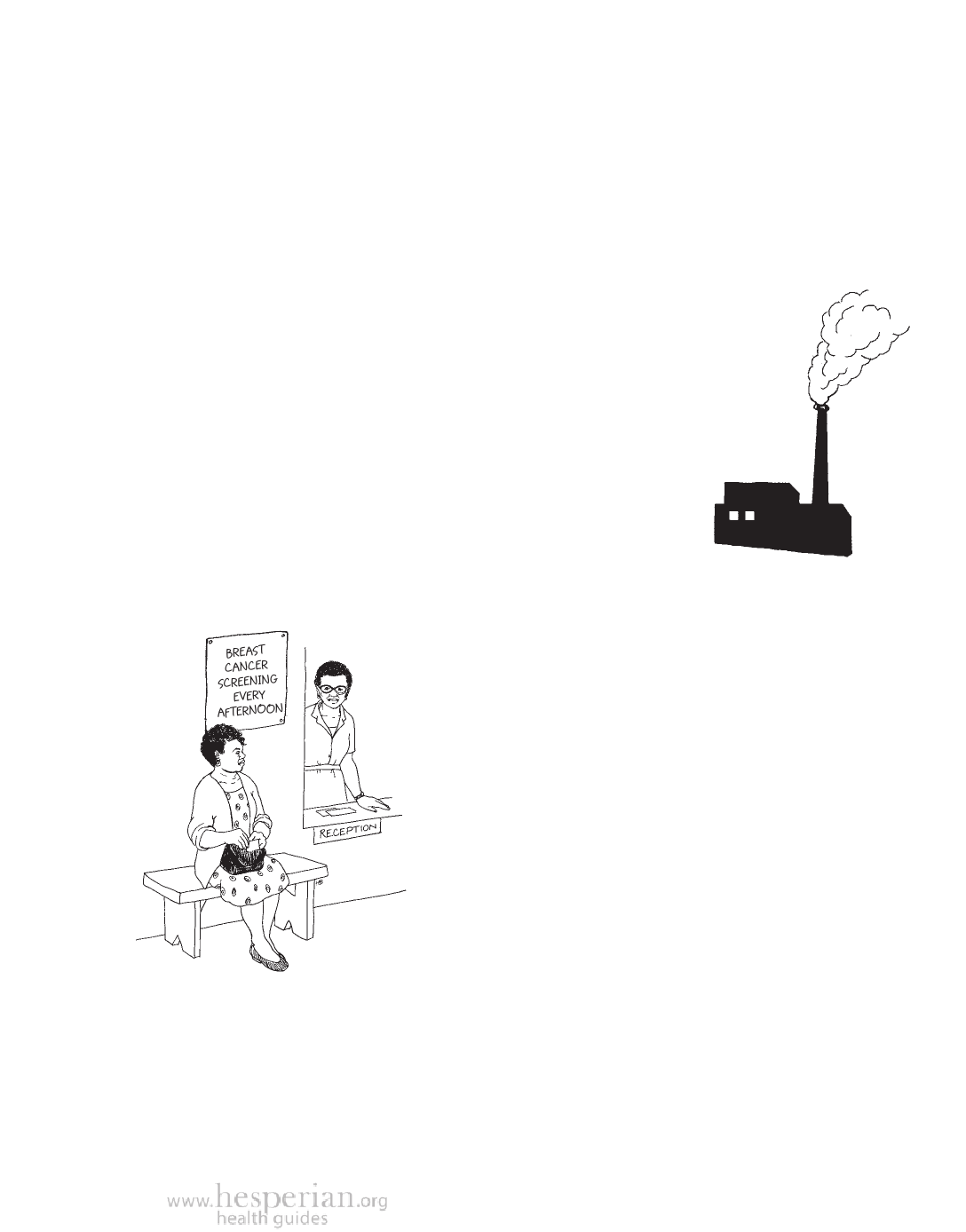
Cancer 327
Cancer
Cancer is a serious illness that can affect many parts of the body. Cancer
starts when some cells begin to grow very quickly in an abnormal way, causing
growths (tumors). Sometimes, tumors go away without treatment. But many
tumors get larger or spread, causing health problems in several parts of the
body. This is cancer. Most growths do not become cancer, but some do.
Once upon a time cancer was unusual. Today it is very common.
What causes cancer?
One cause of the increase in cancer throughout the world is the
increasing amount of industrial pollution and toxic chemicals in our
environment and in our bodies. The increasing number of cancers
in people living in or near highly polluted areas should lead
our governments to act quickly to protect people’s health.
Cancer could be reduced by better regulating the kinds and
amounts of chemicals industries are permitted to use, how
they are used, and how they are disposed of.
Several types of cancer are known to be caused by toxic
chemicals. These include cancer of the lungs, bladder, liver,
breast, brain, blood (leukemia), multiple
myeloma, and non-Hodgkin’s
Not all cancers are caused
by industrial pollution. But
where there is industrial
pollution, there is cancer.
Breast
sccraeevneecnreiyrng
af t ernoon
lymphoma.
People exposed to toxic chemicals over a long
time have a greater risk of getting these cancers
than people with little or no toxic exposures.
Knowing about their risk may help them get
treatment early.
Warning signs or a test
showing something may
be wrong should not be
ignored. See a health
worker for advice and
treatment right away.
Finding and treating cancer early
Finding cancer early can often save a person’s
life, because the person can get treatment
before the cancer spreads. Some warning signs
of cancer are tiredness, chronic weight loss,
lumps, and pain in the body. These can be signs
of other illnesses as well. One way to find out if
a person has cancer is to have a test that takes
a few cells from the affected part of the body.
Someone trained to recognize cancer examines
the cells with a microscope.
A Community Guide to Environmental Health 2012